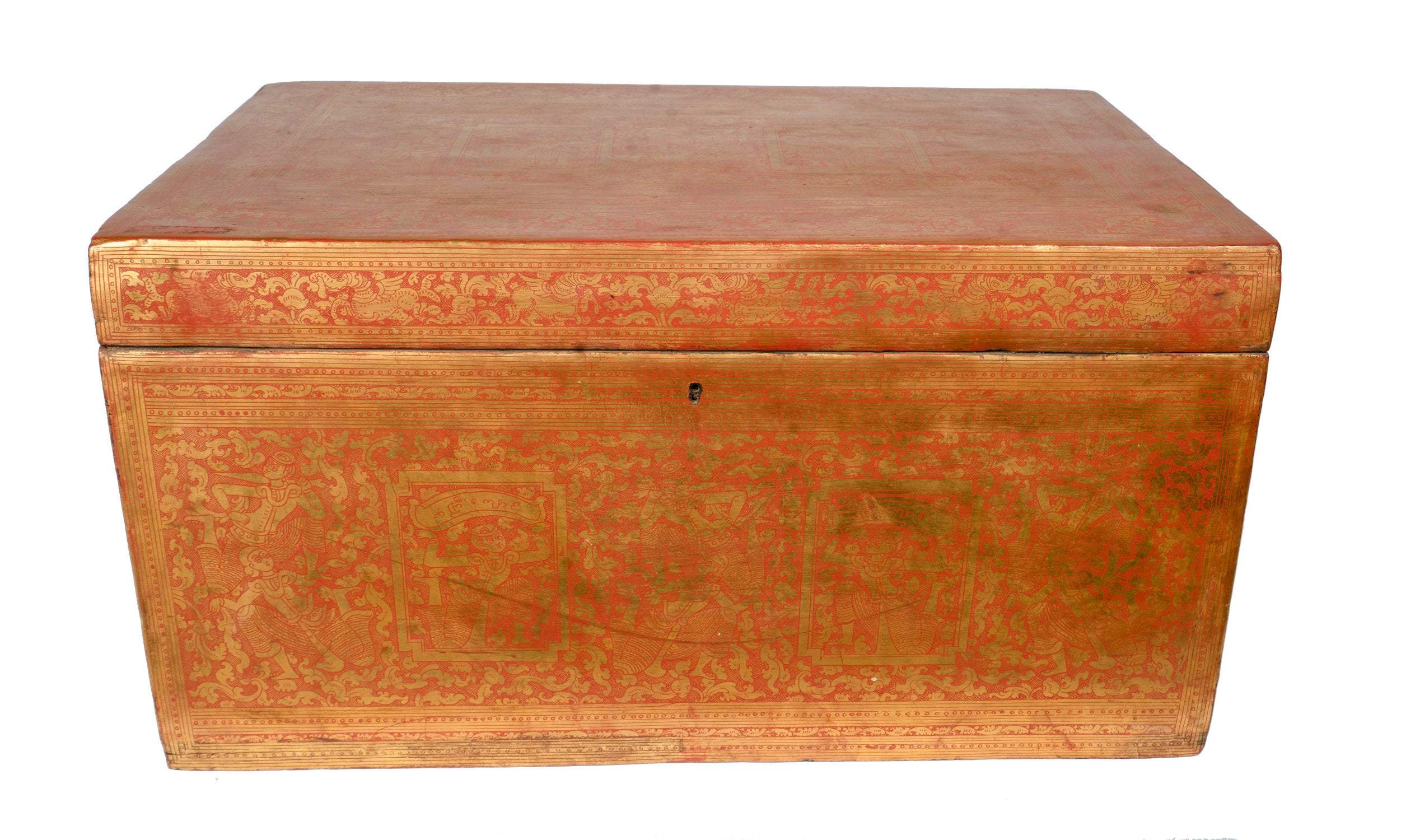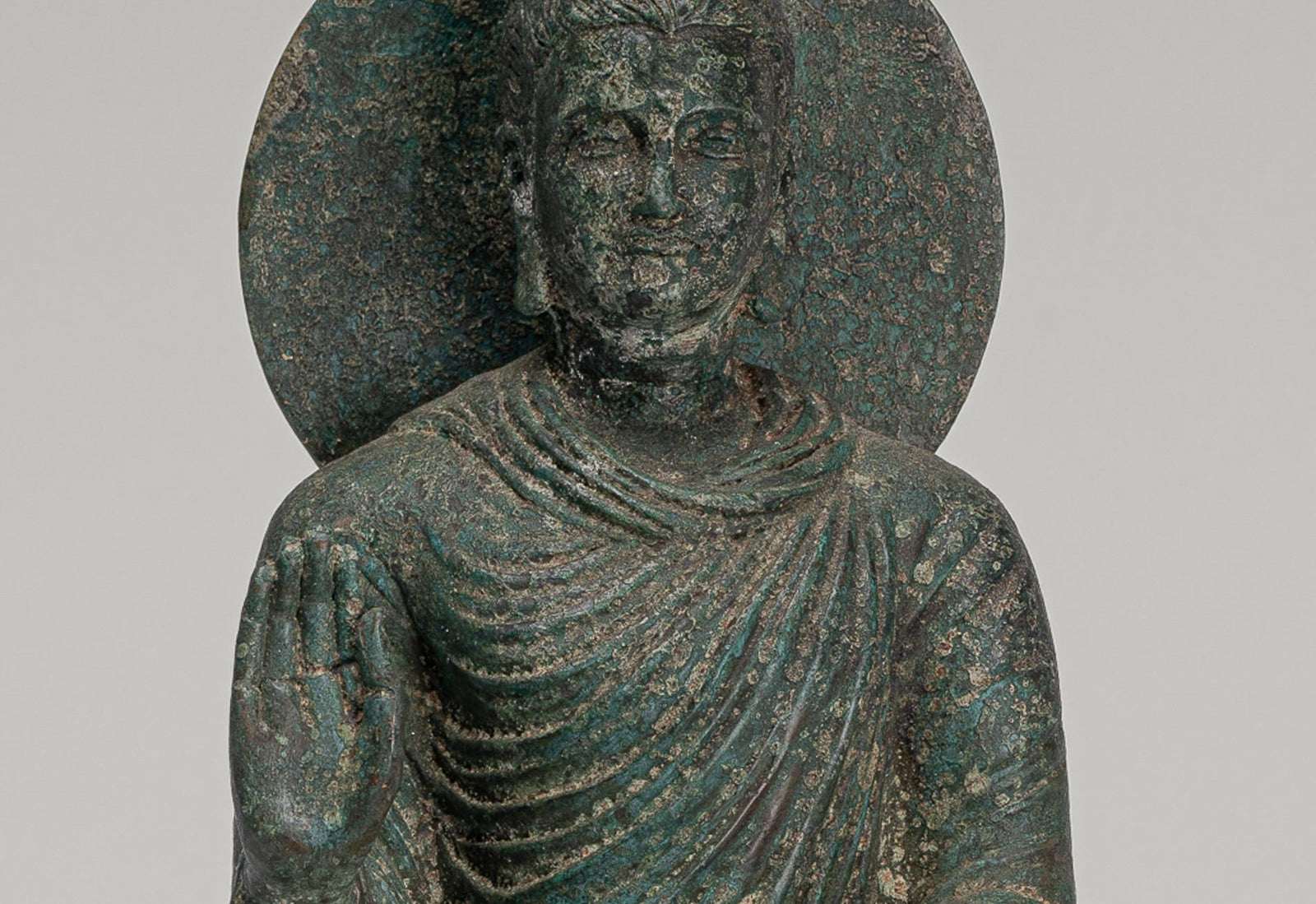-
Antique 19th Century Burmese Lacquerware Sadaik or Manuscript Box - 38cm / 15"
Measurements - Height 38cm (15") x Length 60cm (24")
Ca. 19th century lacquer manuscript box. Sadaik (large, rectangular wooden and gold gilt manuscript boxes) were used at monasteries and the homes of government officials and wealthy individuals. The box depicts a traditional Burmese motif.
The exterior surfaces, lid and four sides are all decorated in the shwe zawa red and gold leaf technique. The draughtsmanship is both assured, delicate and of excellent quality. Given the nature of the Shwe Zawa style it is unusual for a box, such as this, to be found in such good condition.
Provenance: Ex- private UK Collection.
This traditional in appearance piece is sure to add a unique touch to any room of your home or workplace.
SATISFACTION GUARANTEE - We have been offering SE Asian Art for many years and are proud of the reputation we have developed for fair and honest listings. However, if for any reason, whatsoever, you are unhappy with your purchase please just let us know and we will provide a full refund. We want you to be 100% happy with your purchase.
-
The majority of orders will be shipped with DHL. This is a secure, express and fully tracked service.
Items less than 2Kg we typically ship using Royal Mail.
Once we receive your order we try to ship all orders the same or next working day.
Large and/or fragile pieces requiring palletising, specialist crating and/or extra packaging may take a little longer. Palletised shipments will be delivered curbside.
All orders over 35 GBP will be shipped free of charge.

-
We genuinely hope that all purchases delight.
However, if they do not, regardless of reason, we will refund all orders upon receipt of the unwanted item. Just notify us within 14 days of receiving your order that you wish to make a return and send the piece back to us with 30 days of delivery.
Let Us Help You Find The Piece You Desire
What Our Customers Think
Our bronze has arrived - thank you! It is a beautiful and extraordinary piece...I can feel the love and care that the original artist put into the work. With great thanks.
Annie, Ashford, UK
Thank you so much, the Ganesha was received today. It is simply exquisite.
Nisha, Croydon, UK
Received the Buddha today. Many thanks for the 1st class service.
David, London, UK


























